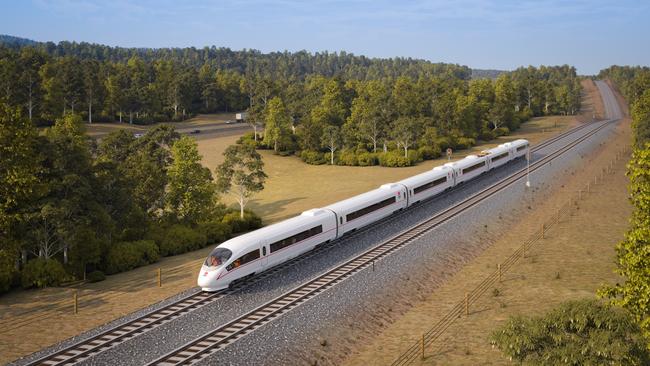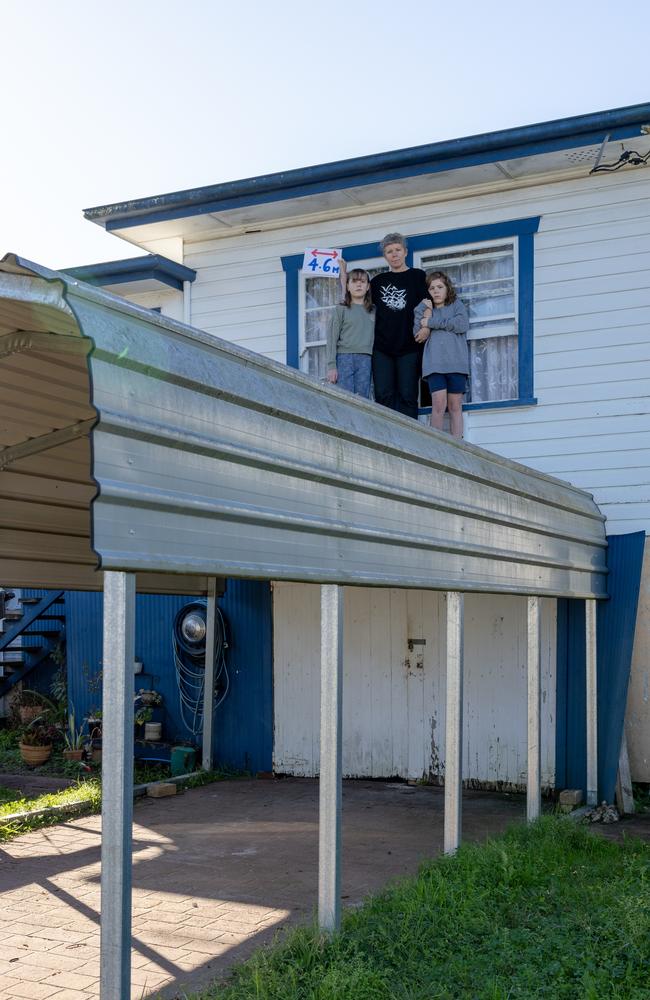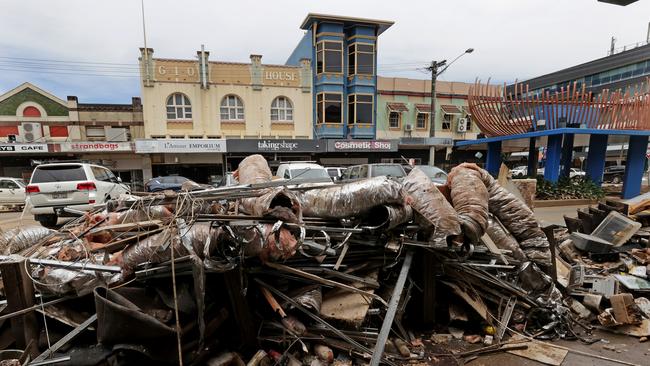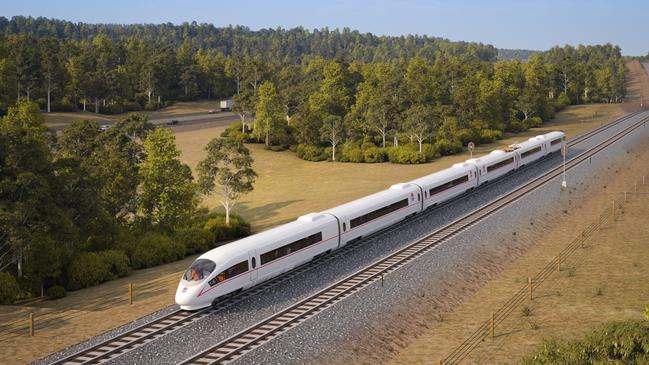Bush Summit: NSW’s regional hubs share wishlist on key issues, including flood recovery, fast rail
From prioritising the delivery of fast rail infrastructure, fast-tracking flood recovery efforts in the state’s north and calls for more police officers on the ground, these are the wishes of the regions.

Local
Don't miss out on the headlines from Local. Followed categories will be added to My News.
The regional hubs of NSW are often neglected, located hundreds of kilometres from Sydney’s Macquarie St - where the state’s political leaders are based.
From prioritising the delivery of fast rail infrastructure, fast-tracking flood recovery efforts in the Northern Rivers, to hopes of more police officers on the ground in the state’s central west, these are the wishes of the regions.
Swifter funding for flood recovery in the Northern Rivers
While the NSW Government touts a “reset” on the failed flood recovery across the Northern Rivers following the 2022 disaster, the region is calling for the urgent delivery of promised housing support for flood victims.
Seventeen months since the flood emergency, hundreds of people are still waiting for government support with no new developments since June.
The NSW Government Resilient Homes Program, which has a $700m pot of cash to fund home buybacks, home raising and retrofitting homes for flood resilience in impacted areas, has been criticized for its slow rollout with locals saying the funding doesn’t go far enough.

In June, hundreds of flood victims living in limbo were told they would not be eligible for any of the promised housing support and that a second tranche of funding for the program was needed.
Northern Rivers MPs have called for the necessary funding to address the ongoing humanitarian crisis in the state’s north, and help flood victims living out of mouldy houses, caravans and their cars - many with small children.

“We’re still working on tranche two, that’s a work in progress and all of us are continuing to advocate for it,” Lismore Labor MP Janelle Saffin said.
“All of us are saying that the Resilient Homes Program should be rolled out differently.”
Ms Saffin said she had spoken to NSW Premier Chris Minns about securing the promised second tranche of funding for buybacks.
“We were promised that by the previous government and (the premier) said that he would back what we’d done even if it wasn’t delivered by the previous government,” she said.
Northern Rivers MPs are also calling for affordable land to be made available to flood victims, so they can use their buybacks to move off flood plains.

House relocations were touted in the early stages of the recovery until the NRRC, the government agency heading flood recovery, released the Draft Resilient Lands Strategy 16 months after the disaster, revealing land would not be made available to flood victims until “early” 2024.
Action on housing affordability woes on Mid-North Coast
Having a roof over one’s head is considered a basic human right, but it’s become an increasingly elusive privilege on the Mid North Coast.
With an idyllic lifestyle, the near-winterless north has become a victim of its popularity.
Twenty years ago housing was comparatively affordable, and favoured by retirees from neighbouring districts.
Covid a few years back lit the fuse, driving metro flight from Sydney as people realised they could work from home, and given that, there were better places to live than the concrete jungle.

The influx of Sydney and Newcastle money had prices on the run as Coffs Harbour and Port Macquarie became out of reach for many, while on-trend Bellingen and coastal acres at Valla and Newee Creek were the preserve of millionaires.
Housing Matters Action Group chair Kerry Pearse understands the complex challenge of housing affordability on the Mid North Coast.
‘Locals’ have been priced out and “without stable housing nothing else works”, Ms Pearse said.
“The whole system’s broken.”

Ms Pearse argues there needs to be a wider offering of home ownership options.
“We need more flexibility in the planning system which has become highly centralised over the past decade,” she said.
Community land trusts are another option Ms Pearse would like to see explored.
This model - popular in the UK and US - is a form of shared ownership of a property, where the land component is owned by a community based, not-for-profit legal entity and the actual residential building is owned or leased by an individual household.
The legal agreement would include a cap on how much a dwelling could be sold for, so the property remains affordable into the future.
Fasttrack delivery of fast rail and Hunter sports precinct
Sport, transport and transitioning - the three big-ticket infrastructure items on the Hunter’s wishlist are neither new nor without controversy.
But the much-mooted $500m Hunter Sports Precinct at Broadmeadow, the fast rail network to Sydney and the delicate movement away from being reliant on the coal industry in the Hunter Valley remain the most important items on the region’s agenda with calls for the projects to be fast-tracked.
The sports precinct, which would transform 63ha surrounding McDonald Jones Stadium, the Newcastle Entertainment Centre and Newcastle Showground, has been predicted to be a “world-class lifestyle precinct”.

“It is a significant urban regeneration proposal, the size and scale of which has never been seen outside of Sydney, incorporating 50ha of exceptional public open and green spaces, state-of-the-art sporting facilities, leisure and entertainment zones, 13,000sq m of commercial space and more than 2600 new homes, including much-needed social and affordable housing,” Newcastle Lord Mayor Nuatali Nelmes has said.
High-speed rail between Newcastle, the Central Coast and Sydney has long been talked about and many have seen it as a bit of a pipedream, but things are finally starting to move along, albeit slowly.
The federal government’s High Speed Rail Authority officially started work on planning and development a couple of months ago after committing $500m in its 2022/2023 budget.
“High speed rail will revolutionise interstate travel on the east coast, providing a fast alternative for people to move between cities and regional centres, promoting sustainable settlement patterns and creating broad economic benefits for regional centres,” Infrastructure, Transport, Regional Development and Local Government Minister Catherine King said in June.
“This is a transformational project that has the ability to touch the lives of all Australians, particularly in our regions.”
Fast delivery of Nowra Bypass
A promised and “needed” bypass around Nowra in the state’s south, clogging up the main highway on the south coast which connects Wollongong to Eden, has become an issue both sides of the political aisle have committed to fixing, yet the region is urging this become a priority project.
The lack of progress around the major piece of road infrastructure has left Shoalhaven mayor Amanda Findley disappointed, urging the state and federal governments to fast track the construction.
Commuters currently experience up to hour delays, depending on the time and day, at North Nowra with the highly-anticipated bypass set to end the misery of motorists.
In January, the federal government announced it would provide $65m for bypass pre-planning works. It brings the total spend on planning for the much-needed project to $105m.

“Pre-planning is obviously important, but we’re now over $100m toward it when some of this money could easily be used for construction costs,” Ms Findley said.
The Greens mayor said the bypass needed to be prioritised due to the rising impact it traffic congestion is having on commuters.
“Many have concerns that we are condemned to decades of waiting and congestion,” she said.
“We’ve heard from state and federal government over and over again about how important and needed the Nowra bypass is, so fast track it and build it if it’s so important.”
The calls to fast track the project are shared by Kiama MP Gareth Ward, whose electorate is impacted by the traffic congestion.
“Labor just don’t know how to deliver infrastructure,” he said. “They need to fast track this project and start putting some of the $105m for pre planning into actual construction.
“Is this really going to be an election issue in the next state election? We should be seeing construction vehicles rolling up to get started now.”
More police resources in state’s central-west
With members of the community on edge about crime rates in regional NSW, as incidents of break and enters and vehicle thefts rise, the region has shared its wish for more police on the ground.
Dubbo councillor Joshua Black, whose own home was broken into last year, has called for a crime summit in a bid to reduce crime in the region, in particular youth offending.
“The ratios of police are lower in areas out here than what they are in metropolitan areas - we shouldn’t be disadvantaged based on our postcode,” Mr Black said.

“We need more resources into things like diversionary programs, like Project Walwaay and Police Citizens Youth Club to help and deter younger generations from committing crimes.
Orana Mid-Western Police District has renewed its commitment to Project Walwaay, a program supporting Aboriginal youths identified as being at risk of staying on the right side of the law.
However, Mr Black said he would like to see more programs with similar initiatives to support minors in need.
He also said a 24-hour police presence in Wellington was essential to reduce crime in the area.


